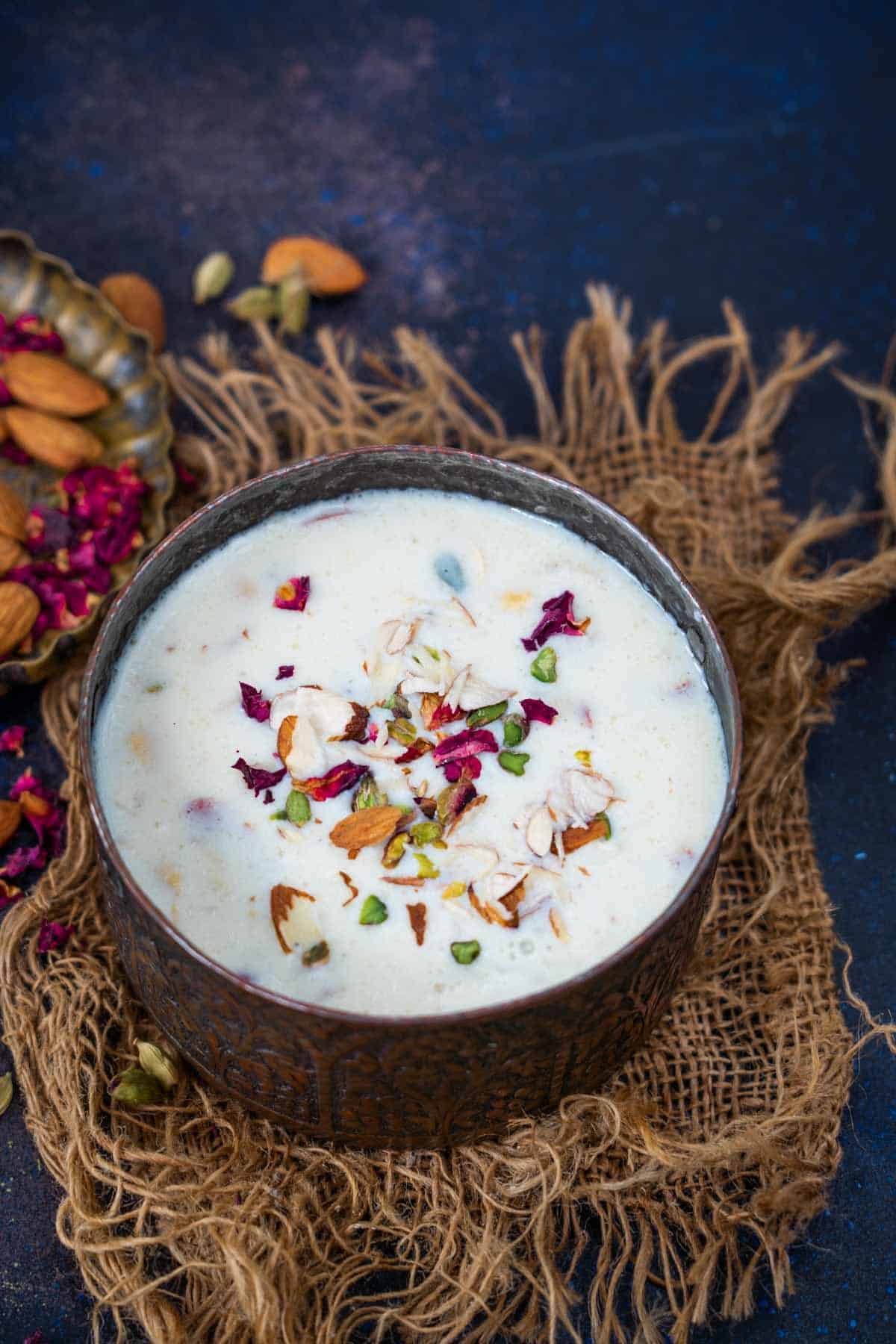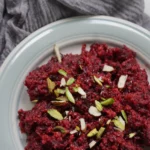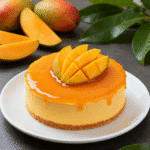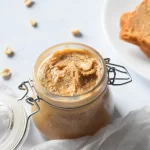Chaler Payesh is the Bengali version of North Indian kheer. It can be made using various ingredients but Chaler Payesh (Rice Kheer) is the most popular variation.
When we say only payesh, it is understood that we are talking about the rice payesh and not any of the other versions.
Chaler payesh is a must-make dessert in Bengali households for special occasions like birthday parties, auspicious occasions, weddings, anniversary celebrations, announcements of some important results, etc, and festivals like Durga Puja, Diwali, Holi, etc.
This traditional melt-in-your-mouth rice pudding has a buttery taste and a pleasing aroma from the use of Gobindobhog rice, a variety of short-grain rice popular in West Bengal.
This payesh recipe is vegetarian and gluten-free and can be easily scaled as per your requirements.
Also Read: Christmas Special Instant Pot Garlic Mashed Potatoes
Bengali Chaler Payesh
Course: DessertCuisine: IndianDifficulty: Easy4
servings10
minutes35
minutes161
kcalMake Bengali Chaler Payesh (Bengali Style Rice Kheer) using my easy traditional recipe. Serve it for festivals, weddings, or special occasions (vegetarian, gluten-free).
Ingredients
3 tablespoons Gobindobhog rice (or any other sticky short-grain rice.)
2 teaspoons ghee (preferably Bengali Jharna ghee.)
34 ounces whole milk (full-fat milk) (1 liter)
¼ cup white granulated sugar (or to taste)
½ teaspoon cardamom powder
10-12 chopped cashew nuts
10-12 slivered pistachios
10-12 slivered almonds
Directions
- Rinse the rice with water and soak it in ½ cup of water for 15-20 minutes.
- Drain the water and mix the rice with ghee. Set aside.
- Heat milk in a heavy bottom pan over medium-high heat and bring it to a boil. Stir very frequently to avoid the milk from scorching at the bottom of the pan.
- Once the milk comes to a boil, reduce the heat to low.
- Add the rice to the pan and cook until the rice is nicely cooked and the payesh has thickened (35-40 minutes). Stir frequently while cooking.
- Add sugar and cook for another 3-4 minutes.
- Add cardamom powder and mix well.
- Check for sugar and add more if needed.
- Garnish the payesh with cashew nuts, pistachios, and almonds. I also like to use some dried rose petals for a pop of color.
- Serve hot or chill for a few hours before serving.
Notes
- Traditionally Gobindobhog rice is used to make payesh but if it’s not available, you can use any fragrant short-grain rice.
- Add the sugar only when the rice is nicely cooked and at the end of cooking. Adding sugar before prevents rice from cooking.











